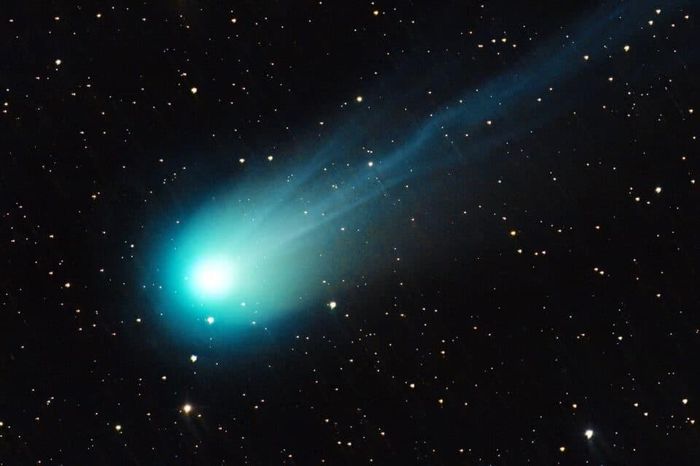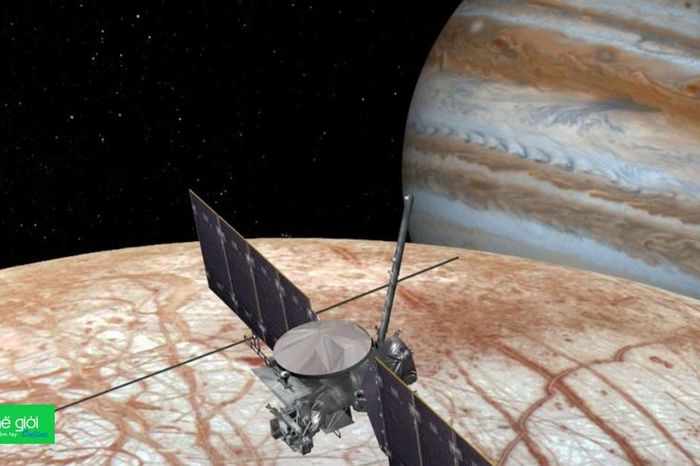Tens of millions of people await the total solar eclipse in North America on April 8

A solar eclipse occurs when the moon is between the sun and the earth and casts darkness on our planet. The first place in North America to witness a total solar eclipse, when the moon covers 100% of the sun, will be Mazatlán in Sinaloa, Mexico starting at 11:07 a.m. MST, or at 0:07 p.m. /4 according to Vietnam time, and lasts for 4 minutes and 20 seconds.
The total eclipse will then pass over two more Mexican cities, Durango and Coahuila. Next, the path of the total solar eclipse will enter Texas before moving through 14 other US states and then Canada.
The difference in this eclipse is that the moon will obscure the sun for up to 4 minutes and 28 seconds. If in previous times, the solar eclipse often took place in remote places around the world, this time it passed through big cities.
According to NASA, an estimated 31.6 million people live in the path of a total solar eclipse in the United States, compared to about 12 million people during the last total solar eclipse that passed through the US territory in August 2017.
According to AP, an estimated 44 million people live in the path of the total eclipse, with several hundred million more within 320 km of the partial eclipse.
This could be one of the most watched solar eclipses ever.
During a total solar eclipse, for locations within the path of totality, which includes a 185 km wide path across North America, observers will be able to see the moon covering 100% of the sun.
Eclipse enthusiasts are expected to flock to cities and towns along the strip of land that cuts from Mexico, into the United States and Canada.
For locations outside the path of a total solar eclipse, although a total solar eclipse is not visible, a partial solar eclipse can still be seen.
To safely observe a solar eclipse, you must use a sunlight filter. Even cameras, telescopes and binoculars will need a solar filter placed in front of the lens. Only people located in the area where the total solar eclipse takes place can briefly remove their glasses to see the sun's halo with the naked eye. Those observing the partial solar eclipse must wear glasses the entire time.
Astronomy lovers who cannot directly observe the eclipse can also watch it in full on NASA's online site.
The next total solar eclipse scheduled for 2026 will pass over the North Pole, Greenland, Iceland, the Atlantic Ocean and northern Spain. The next solar eclipse in 2027 will also pass through Spain and North Africa, with a total duration of up to six and a half minutes.
North Americans will have to wait until 2033 to see another total solar eclipse, but only in Alaska. In 2044, Western Canada, Montana and North Dakota (USA) will see a solar eclipse. And in 2045, the US will once again experience a total solar eclipse from coast to coast.
You should read it
- Why do total solar eclipses occur more frequently in the Northern Hemisphere than in the Southern Hemisphere?
- August 21, 2017: NASA will broadcast 360-degree videos directly on Facebook's transcontinental eclipse phenomenon on Facebook, you can see
- America must prepare 'carefully' for the Japanese Food Festival which will take place on August 21
- Admire the best images of the total solar eclipse on August 21
- 100,000 billion cicadas came to life at the same time in the US after a total solar eclipse
- Amazing phenomenon - the 'annular eclipse' glows in the sky today
- Do you know what a solar eclipse looks from the Moon?
- NASA is about to launch three rockets to penetrate the total solar eclipse on April 8
May be interested
- How to watch the 'strawberry' full moon and its subtle eclipse from anywhere on June 5
 the partial penumbral lunar eclipse won't be visible in north america, but you can still view the full moon's quiet beauty online.
the partial penumbral lunar eclipse won't be visible in north america, but you can still view the full moon's quiet beauty online. - The 'Devil's Comet' appears with a total solar eclipse
 the 'devil comet' just had an eruption of dust, gas and ice during its first flyby of the earth in 71 years, taking place at the same time as the total solar eclipse on april 8.
the 'devil comet' just had an eruption of dust, gas and ice during its first flyby of the earth in 71 years, taking place at the same time as the total solar eclipse on april 8. - NASA is about to launch 3 rockets to 'penetrate' the solar eclipse
 according to nasa, three rockets carrying many devices will fly into the sky on april 8, while the united states is covered by a total solar eclipse.
according to nasa, three rockets carrying many devices will fly into the sky on april 8, while the united states is covered by a total solar eclipse. - Admire the best images of the total solar eclipse on August 21
 let us admire the best images of the total solar eclipse yesterday - august 21!
let us admire the best images of the total solar eclipse yesterday - august 21! - 100,000 billion cicadas came to life at the same time in the US after a total solar eclipse
 after a total solar eclipse, up to 100 trillion cicadas are expected to emerge from hibernation in the us, creating a rare sight.
after a total solar eclipse, up to 100 trillion cicadas are expected to emerge from hibernation in the us, creating a rare sight. - Amazing phenomenon - the 'annular eclipse' glows in the sky today
 astronomers in central africa, madagascar and the south indian ocean will have the opportunity to see the fascinating natural eclipse of the day.
astronomers in central africa, madagascar and the south indian ocean will have the opportunity to see the fascinating natural eclipse of the day. - What is a solar eclipse? When does a solar eclipse take place?
 besides the lunar eclipse, eclipse is also one of the interesting astronomical phenomena that can be observed from the earth, getting the attention of many people.
besides the lunar eclipse, eclipse is also one of the interesting astronomical phenomena that can be observed from the earth, getting the attention of many people. - Do you know what a solar eclipse looks from the Moon?
 recently nasa announced a gif to help us understand what it feels like to observe an eclipse on earth when standing from the moon.
recently nasa announced a gif to help us understand what it feels like to observe an eclipse on earth when standing from the moon. - What is a lunar eclipse? Lunar eclipse occurs when?
 the lunar eclipse is one of the most interesting astronomical phenomena taking place in the universe that humans can observe from earth. in the following article, we will learn more about this phenomenon.
the lunar eclipse is one of the most interesting astronomical phenomena taking place in the universe that humans can observe from earth. in the following article, we will learn more about this phenomenon. - Solar Storm is making landfall on Earth
 a moderate solar storm making landfall on earth is likely to cause auroras dancing across the sky over north america.
a moderate solar storm making landfall on earth is likely to cause auroras dancing across the sky over north america.










 The Soyuz spacecraft returned from the ISS, landing in Kazakhstan
The Soyuz spacecraft returned from the ISS, landing in Kazakhstan FAA 'green light' for JetZero's 'mono-wing' aircraft
FAA 'green light' for JetZero's 'mono-wing' aircraft NASA robot enters the alien 'river of life'
NASA robot enters the alien 'river of life' Garbage falls from space and hits civilian homes in the US
Garbage falls from space and hits civilian homes in the US 'Hot' race to design a self-propelled vehicle on the Moon for NASA
'Hot' race to design a self-propelled vehicle on the Moon for NASA Anxiously awaiting the discovery of life on the moon 2.6 billion km from Earth
Anxiously awaiting the discovery of life on the moon 2.6 billion km from Earth